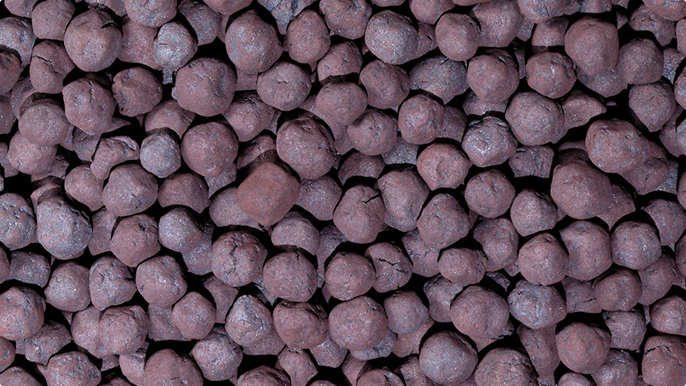Despite the current annual demand for the import of 8.5 million metric tons of iron ore pellets, almost no Iranian port possesses the required infrastructure for such a high volume of the raw material, said the president of Iron Ore Producers and Exporters Association of Iran on Wednesday.
The shortage of iron ore pellets is among the most serious challenges the country’s steel sector is facing. To overcome this problem, “we need to create the necessary infrastructure for imports in our ports,” Qadir Qiafeh told Fooladnews on Wednesday.
He criticized the recent comprehensive steel plan for not taking the private sector into consideration, urging the government to give more credit to the private sector. Qiafeh added that Iran could be self-sufficient in producing iron ore pellets in the next four years only if the steel sector finds appropriate sources for securing funds to finance its development projects. “The prerequisite for this is the removal of international anti-Iran sanctions,” he asserted.
The iron ore association president’s assessment of iron ore pellet shortage is more worrying than that of the industry minister, who raised the alarm about the iron ore shortage last month, saying the country annually needs some six million metric tons of iron ore pellets, which is considered as the key raw material in steel production process.
To confront the challenges in providing the iron ore pellet, the ministry recently tasked major steelmakers to barter their steel products with iron ore pellets for the time being. Elsewhere, Mehdi Karbasian, the chairman of the Iranian Mines and Mining Industries Development and Renovation Organization (IMIDRO), announced that with the country’s comprehensive steel plan being finalized, the entire domestically-produced iron ore would be consumed by Iranian producers of iron ore pellets and iron ore concentrate.
Yet, the domestic steel manufacturers have been recently getting involved in a more confusing situation. On the one hand, they are in dire need of the raw materials, most importantly the iron ore pellet, while the port cities seem to lack the necessary infrastructure for the planned import of 8.5 million metric tons of the material.
On the other hand, mines, in order to continue their existence, have to export the iron ore as there are not enough processing units in the country to buy the iron ore and pelletize it. At the same time, the very few pellet producers in the country are state-owned and if there are any private sector pellet manufacturers in the market, they would definitely prefer to export their products at the global prices, which now stand between $100 and $120, rather than receiving less than $30 for every metric ton of the product.
Given the current situation, some experts say the administration’s pledges to support the private sector in steel industry are mere words. The government decisions weigh heavily on the steel industry, although many unwise previous decisions have been reversed by the new administration. Still, the private sector now badly needs the government’s backing, if there’s any will to realize the long-term goal of reaching an annual steel production capacity of at least 52 million metric tons by 2025.


